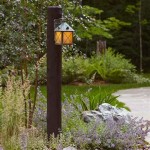Choosing the Right Paint for Outdoor Plant Pots
Selecting the appropriate paint for outdoor plant pots is crucial for both aesthetic appeal and the longevity of the pot, especially considering the constant exposure to the elements. The ideal paint should not only provide a durable finish but also withstand moisture, temperature fluctuations, and potential damage from sunlight. This article will explore various paint types suitable for outdoor plant pots, highlighting their properties and application considerations. Understanding these factors will aid in making informed decisions, ensuring your plant pots remain vibrant and protected.
The most common materials used for plant pots include terracotta, plastic, ceramic, and concrete. Each material possesses unique characteristics that influence paint adhesion and durability. For instance, terracotta is porous and absorbs moisture readily, requiring a paint that can seal the surface effectively. Plastic pots, on the other hand, are non-porous and may necessitate a primer to enhance paint adhesion. Ceramic and concrete pots also have varying degrees of porosity, impacting paint selection.
The surrounding environment significantly dictates the choice of paint. Plant pots kept in shaded areas might require different properties than those exposed to direct sunlight. Regions with high humidity and frequent rainfall pose different challenges compared to arid climates. Considering these localized conditions is essential for selecting a paint that can effectively protect the plant pot's surface.
Acrylic Paints for Outdoor Plant Pots
Acrylic paints are a popular choice for outdoor plant pots due to their versatility, durability, and water resistance. They are available in a wide range of colors and finishes, allowing for diverse design options. Acrylic paints adhere well to most surfaces, including terracotta, plastic, and ceramic, but a primer might be necessary for enhanced adhesion, especially on glossy surfaces. Moreover, acrylic paints are relatively easy to apply and clean up, making them suitable for both novice and experienced painters.
One of the key advantages of acrylic paints is their flexibility. They can expand and contract with temperature changes, reducing the risk of cracking or peeling. However, acrylic paints can be susceptible to fading over time, particularly when exposed to direct sunlight. To mitigate this, selecting high-quality acrylic paints with UV-resistant properties is recommended. A clear coat sealant can also be applied to further protect the paint from fading and weathering.
When using acrylic paints, proper surface preparation is critical. The pot should be clean, dry, and free of any loose debris. For terracotta pots, sealing the surface with a primer designed for porous materials can prevent the paint from being absorbed excessively. For plastic pots, sanding the surface lightly can improve paint adhesion. Multiple thin coats of paint are generally preferable to a single thick coat, as this reduces the likelihood of drips and ensures even coverage.
Latex Paints for Outdoor Plant Pots
Latex paints are another viable option for painting outdoor plant pots. They are known for their durability, ease of application, and low VOC (volatile organic compound) content. Latex paints offer good resistance to moisture and are less prone to cracking and peeling than some other paint types. They also provide good color retention, although they may not be as fade-resistant as high-quality acrylic paints. Like acrylic paints, latex paints are available in a wide array of colors and finishes.
Latex paints are generally water-based, which facilitates easy cleanup and reduces the risk of harmful fumes. They adhere well to most surfaces, but priming is often recommended, particularly for porous materials. A primer designed for exterior use will provide the best protection against moisture and enhance the paint's adhesion to the pot's surface. Latex paints are more breathable than some oil-based paints, allowing moisture to escape from the pot, which can be beneficial for plant health.
Preparation for latex paint application is similar to that for acrylic paints. The pot should be thoroughly cleaned and dried, and any loose particles should be removed. For terracotta pots, sealing with a primer is crucial to prevent excessive absorption. For plastic pots, sanding the surface lightly can improve adhesion. Applying multiple thin coats of paint ensures even coverage and reduces the risk of drips. A sealant can be applied after the paint has dried to provide additional protection against the elements.
Specialty Paints for Outdoor Plant Pots
Beyond acrylic and latex paints, several specialty paints are specifically designed for outdoor use and can offer unique benefits for plant pots. These include epoxy paints, concrete stains, and textured paints. Epoxy paints provide an exceptionally durable and water-resistant finish, making them ideal for plant pots exposed to harsh weather conditions. Concrete stains penetrate the surface of concrete pots, creating a long-lasting color that won't peel or flake. Textured paints add visual interest and can conceal imperfections on the pot's surface.
Epoxy paints are typically two-part systems that require mixing before application. They offer excellent resistance to chemicals, abrasion, and moisture, making them suitable for plant pots that will be subjected to heavy use or exposure to fertilizers and other gardening products. However, epoxy paints can be more challenging to apply than acrylic or latex paints and may require specialized equipment. They also tend to be more expensive.
Concrete stains are designed to penetrate the surface of concrete, creating a permanent color change without forming a film. This prevents peeling and flaking, which can be a problem with traditional paints. Concrete stains are available in a variety of colors and can be used to create a natural, weathered look. They are relatively easy to apply but require careful preparation of the concrete surface. The surface should be clean, dry, and free of any sealants or coatings.
Textured paints add visual interest and can conceal imperfections on the pot's surface. They are available in a range of textures, from subtle stippling to rough, stone-like finishes. Textured paints can be applied with a brush, roller, or trowel, depending on the desired effect. They are generally durable and weather-resistant but may require more frequent cleaning to remove dirt and debris.
When selecting any of these paints, consider their suitability for the material of your plant pot. Some paints work better on terracotta, while others are more appropriate for plastic or concrete. It's also crucial to read and follow the manufacturer's instructions carefully to ensure proper application and long-lasting results. A test area should be painted first to ensure proper adhesion and the desired color and finish are achieved.
Regardless of the chosen paint type, regular maintenance will extend the life of the finish and keep your plant pots looking their best. This includes cleaning the pots periodically with a mild detergent and water to remove dirt and debris. Touching up any chips or scratches as soon as they appear will also prevent moisture from penetrating the paint layer and causing further damage. Proper storage during colder months, such as under a covered porch or a shed, can also help protect the paint from extreme weather conditions and prolong its lifespan.

How To Paint Clay Pots

Painting Garden Pots With Annie Sloan Chalk Paint Our Southern Home

How To Paint Terracotta Pots Sand And Sisal

How To Paint Flower Pots For Outdoors Easy Fall Front Porch Decorating
:max_bytes(150000):strip_icc()/projectswithkids-e0d2ff8ce583475eab5fa5a5f46164e5.jpg?strip=all)
38 Clever Painted Pot Ideas

Diy Plant Pots

Flower Pot Makeover With Spray Paint My Sweet Home Living

How To Make Your Planters Glow In The Dark Do It Yourself Fun Ideas

Painting Garden Pots With Annie Sloan Chalk Paint Our Southern Home

How To Paint A Garden Pot And Outdoor Containers At Blu







